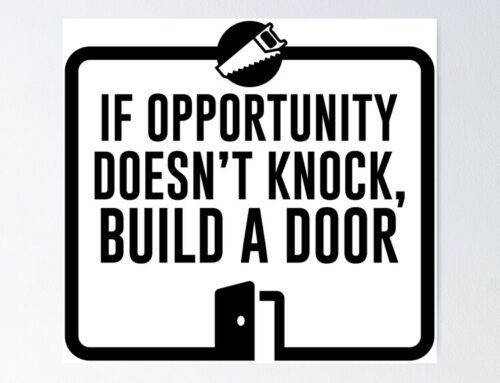
How Small Businesses Are Spending Their Marketing Dollars
It’s hard to overstate how broad the marketing strategies of small businesses have become. Before the Internet, small companies relied on print and traditional media advertisements, cold calling, and tight business networks. Even landing space in the Yellow Pages was considered an effective marketing move.
Today’s marketing options are much more extensive, and small businesses are increasing how much they spend on them. According to a recent Taradel marketing survey, 94% of small businesses have plans to boost their marketing spending in 2024.
But where will these dollars go? Here are a few marketing channels many small businesses are considering for 2024.
Social Media
Advertising on social media has become the central area of concentration for most small businesses. According to a 2022 survey by Visual Objects, 70% of all small businesses set aside some budget for social media marketing. Over a quarter of these companies allowed social media to account for 10% and 30% of their advertising budgets.
Few marketing channels are as cost-effective as social media ads. The biggest social networks have a worldwide reach, making targeting specific users and areas easier. Analytic social media tools are also easy to access, use, and understand.
Small businesses do have strong preferences for certain social networks. The Taradel survey mentioned above found that Facebook is favored by an overwhelming majority (83.26) of small businesses, followed by Instagram (48%), LinkedIn (30%), and TikTok (10.7%).
Customer acceptance and trust in social media marketing are also on the rise. Insider Intelligence, a research and data provider, found that YouTube is the most trusted site, followed by Facebook, Instagram, and LinkedIn. As social media continues to evolve, this connection may grow even stronger.
Direct Mail
Despite the apparent dominance of social media, plenty of small businesses still rely on traditional direct mail for their contemporary marketing campaigns. This practice remains relevant because it involves a tangible item that makes a memorable physical impression on customers.
As more small businesses turn to social media and other high-tech marketing solutions, there’s less mailbox competition with direct mail, making it likelier to stand out.
According to the Taradel survey, most small businesses use social media and direct mail to carry out their marketing strategies. Nearly 68.5% plan to use Facebook in 2024, and almost 60.3% said they’ll use direct mail. Combining social media and direct mail is an effective strategy for broadening a small business’s reach.
Search engine marketing continues to thrive. Google Ads, in particular, has changed the digital marketing landscape for many small businesses. With keyword research, demographic analytics, and design tools, marketing employees can create entire campaigns without stepping away from their desks.
That said, the SEO landscape is very competitive. Marketing departments strive to have their companies appear at the top of search results. This is especially important because most people don’t click through to page two. In fact, 95% of all web traffic goes to websites on page one.
SEO can be challenging because it requires small businesses to have operating websites. Most do already, but some companies don’t update them consistently. With outdated information and designs, it’s difficult to participate in search engine marketing. Doing SEO marketing well can take some time and a bigger portion of a company’s budget, but the results are often worth it.
Email and Content Marketing
Email and content marketing are two additional avenues where small businesses are investing their marketing dollars in 2024. These strategies offer a unique opportunity to connect with customers and build lasting relationships.
Email marketing is relatively inexpensive. Yet, it provides a direct line of communication to customers, allowing businesses to send targeted messages, promotions, and updates right to their inbox. The personal touch of email marketing can foster customer loyalty and drive conversions.
Content marketing has gained significant traction in recent years. By creating valuable and engaging content, small businesses can position themselves as industry authorities and attract a dedicated audience. Blog posts, videos, infographics, and podcasts are just a few forms of content that can be leveraged.
These two strategies often work hand in hand. Email campaigns can deliver valuable content directly to subscribers, while content marketing efforts can drive traffic to a business’s website, ultimately growing their email list. The synergy between these approaches can lead to increased brand awareness and customer engagement.
Traditional Media
Though its footprint has been obscured in the digital age, traditional media is still an area of focus for some small businesses. Local retailers, restaurants, service providers, and others dealing with customers directly will likely benefit from newspapers, bus stops, and TV ads.
Traditional media marketing persists because it’s user-friendly. Many potential customers are put off by the busy marketing landscape of the internet and its complex click-through procedures. While the traditional media audience is sure to decline in future generations, many small businesses will continue to find value in old-fashioned marketing.
Where Is Small Business Marketing Headed?
Competition for attention on social media and the internet will only increase in the coming years. Small businesses should prioritize a multi-channel approach to marketing in 2024 and beyond. Wide-scale social media strategies can work in tandem with direct mail, content marketing, and other forms of marketing that still have relevance in the modern age. As the marketing landscape evolves, staying adaptable and open to emerging trends will be key for small businesses to thrive.
Article by Forbes

206-391-5682
i2i@i2idirectmarketing.com
www.i2idirectmarketing.com
“…all deliveries GPS tracked…”




